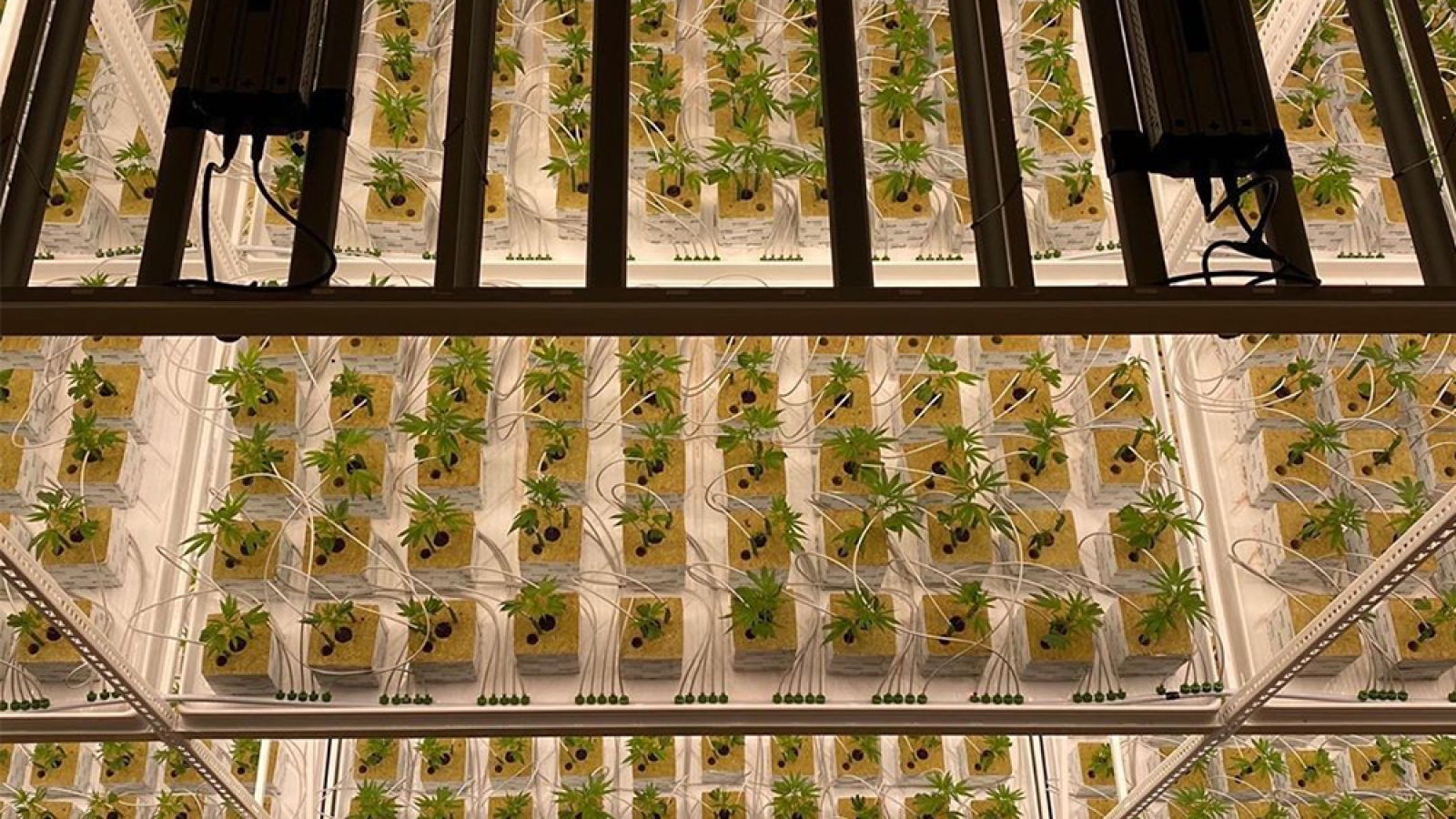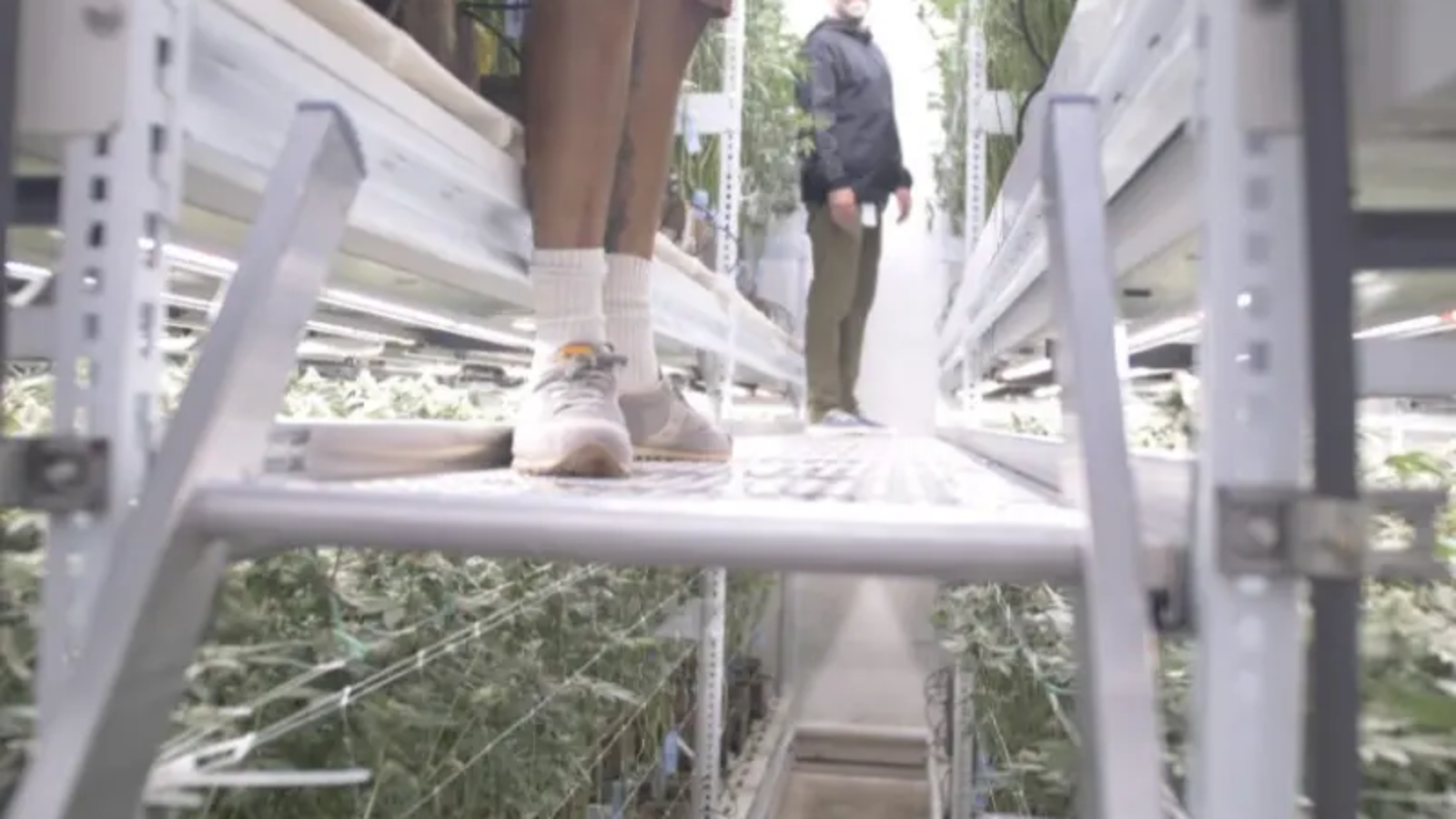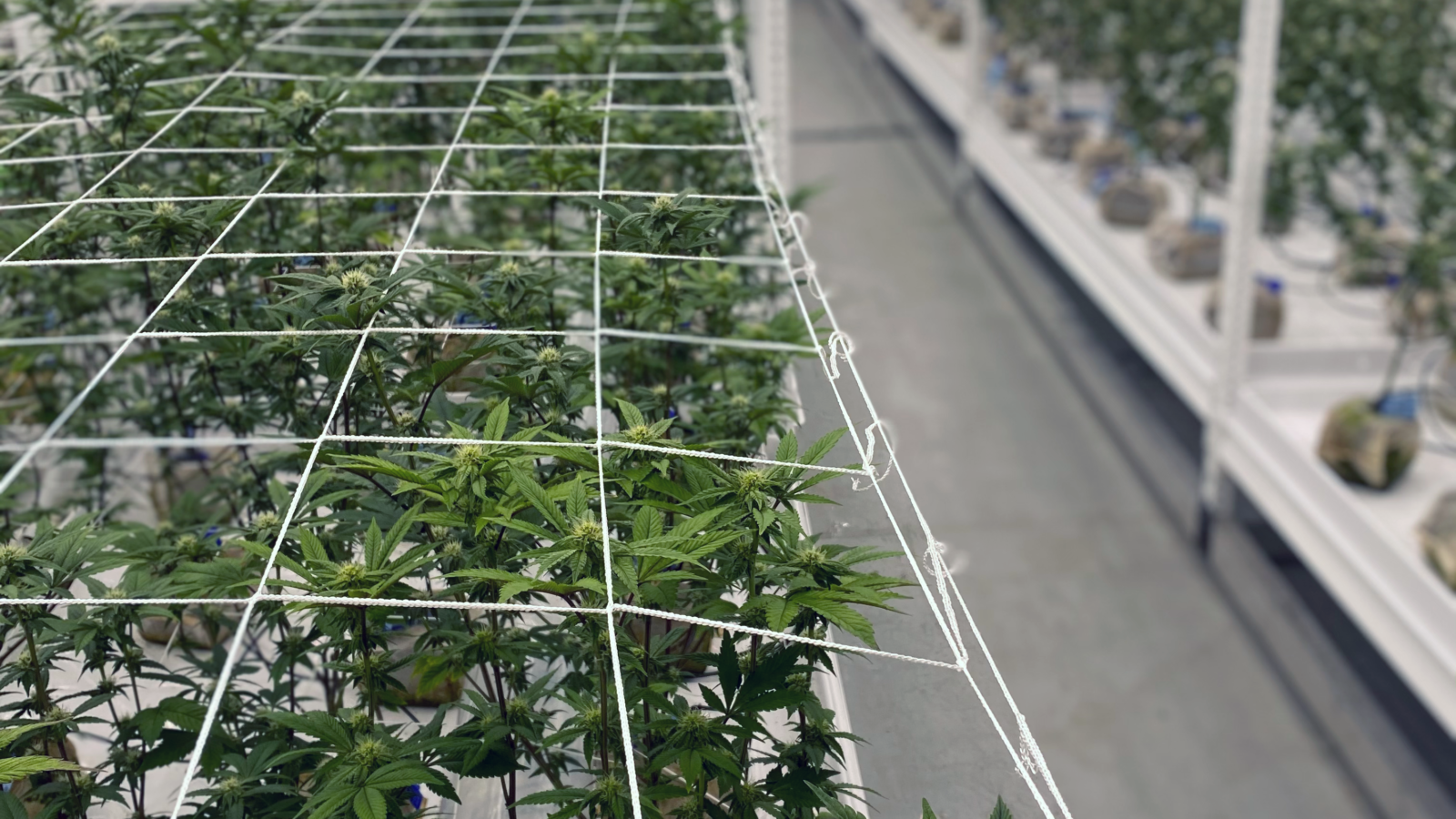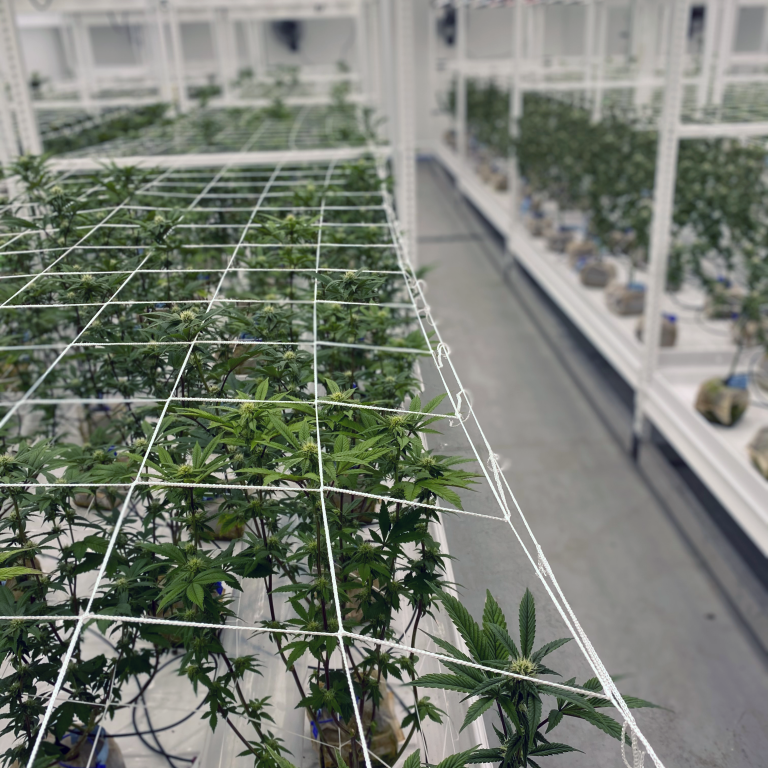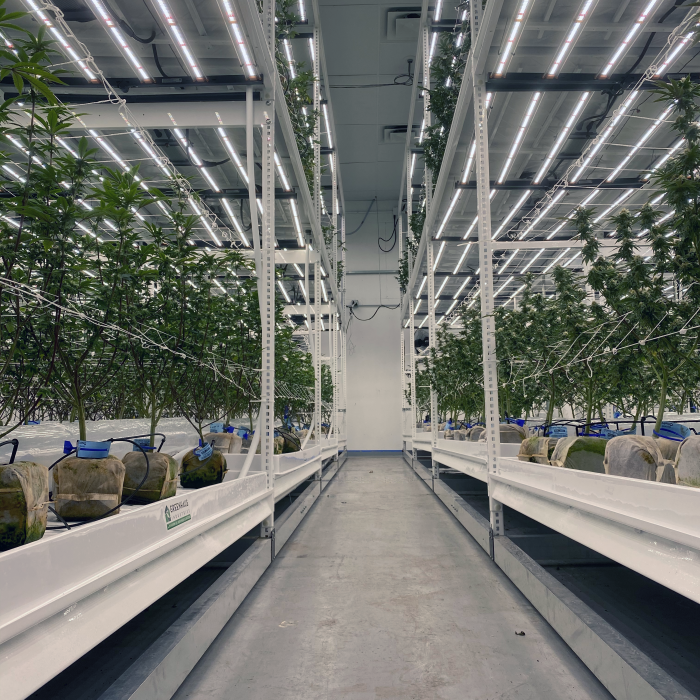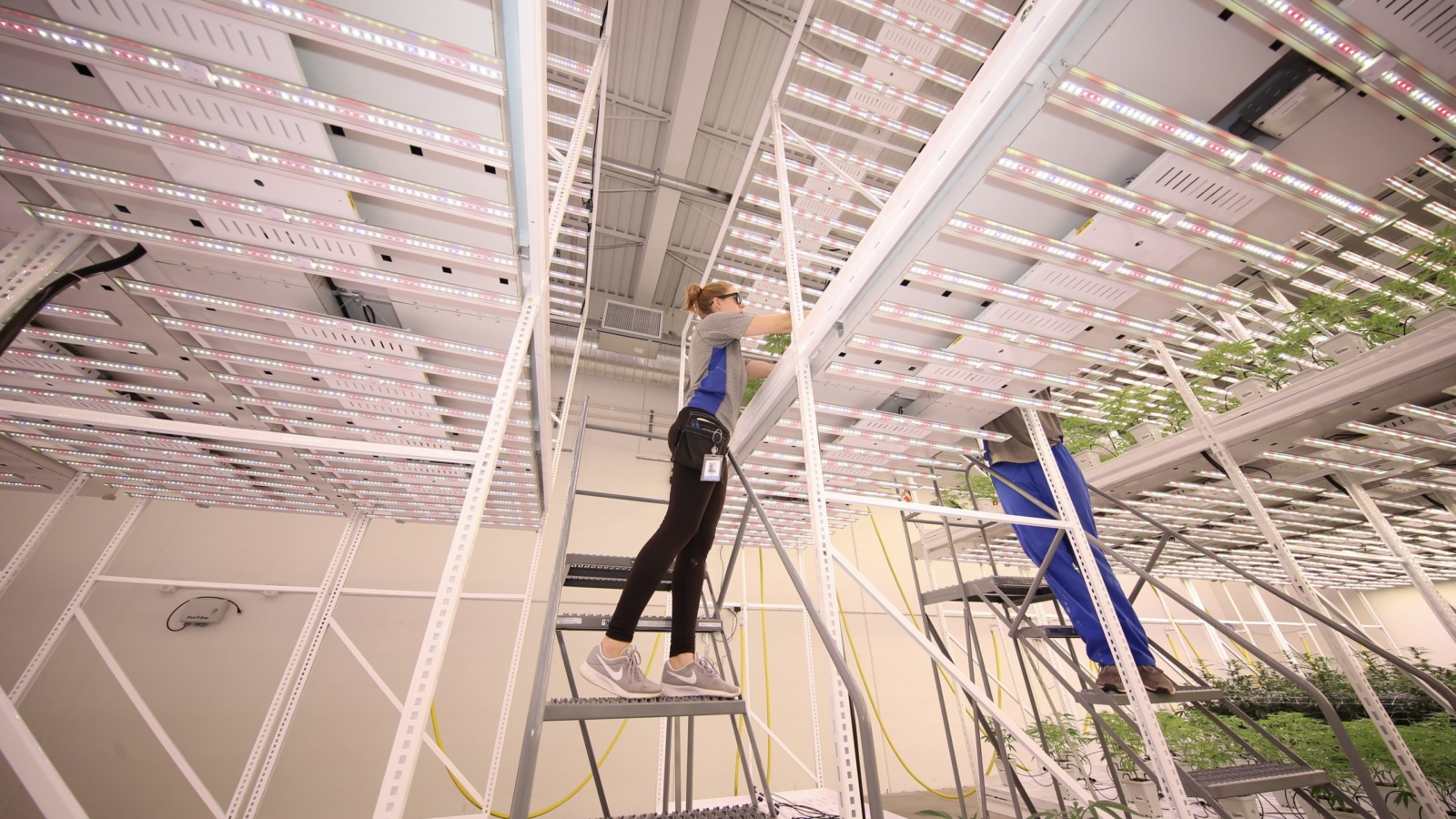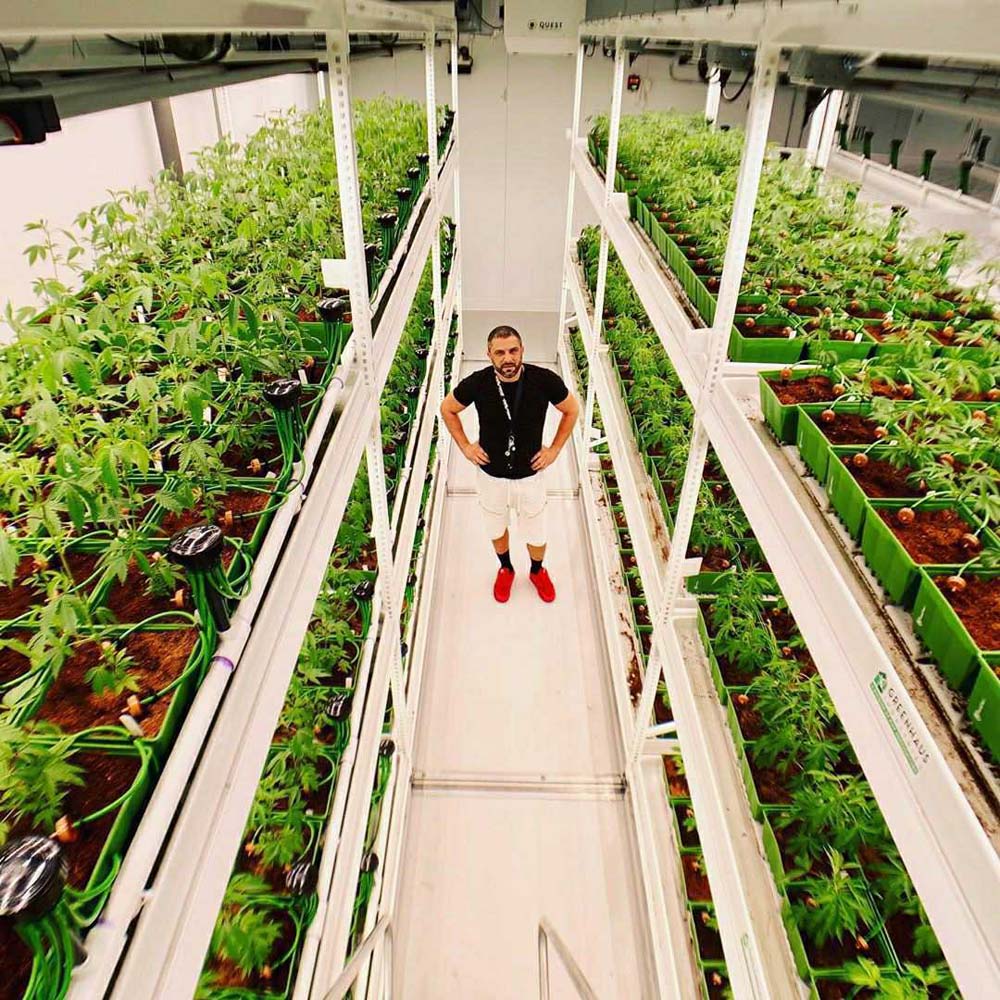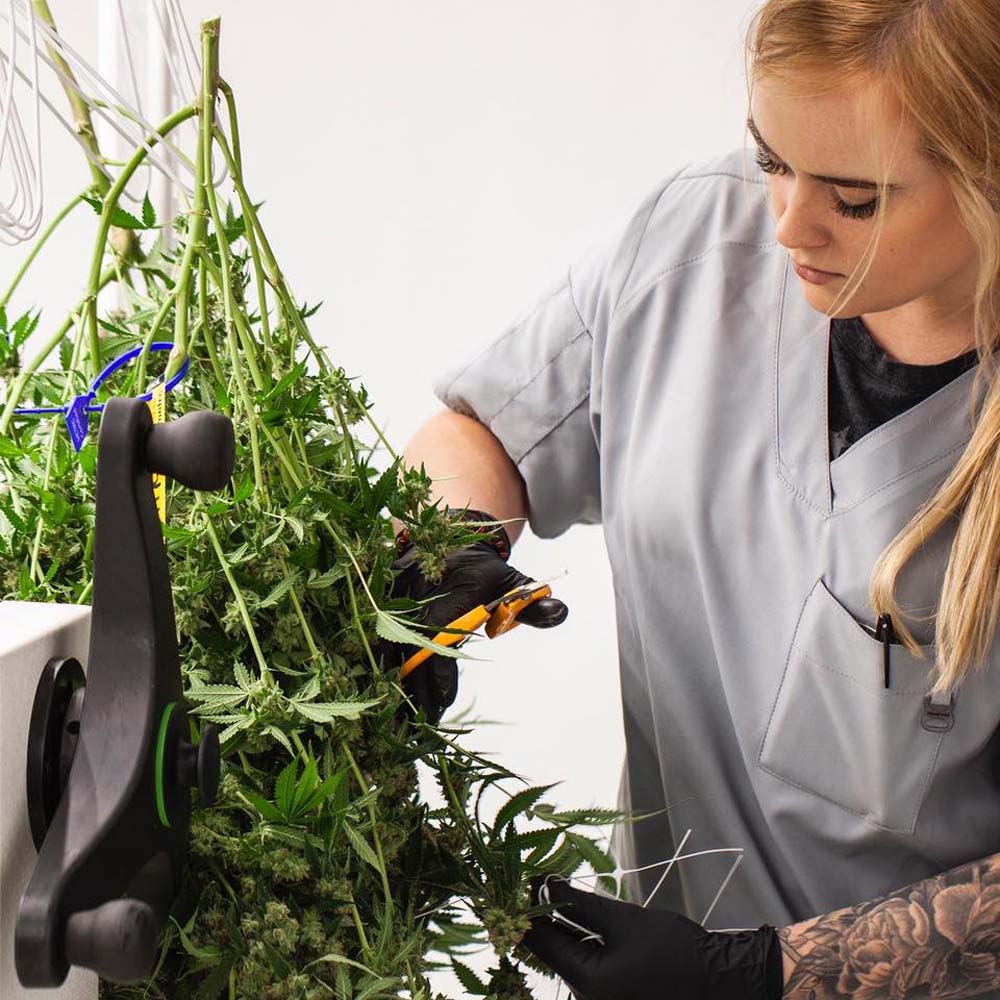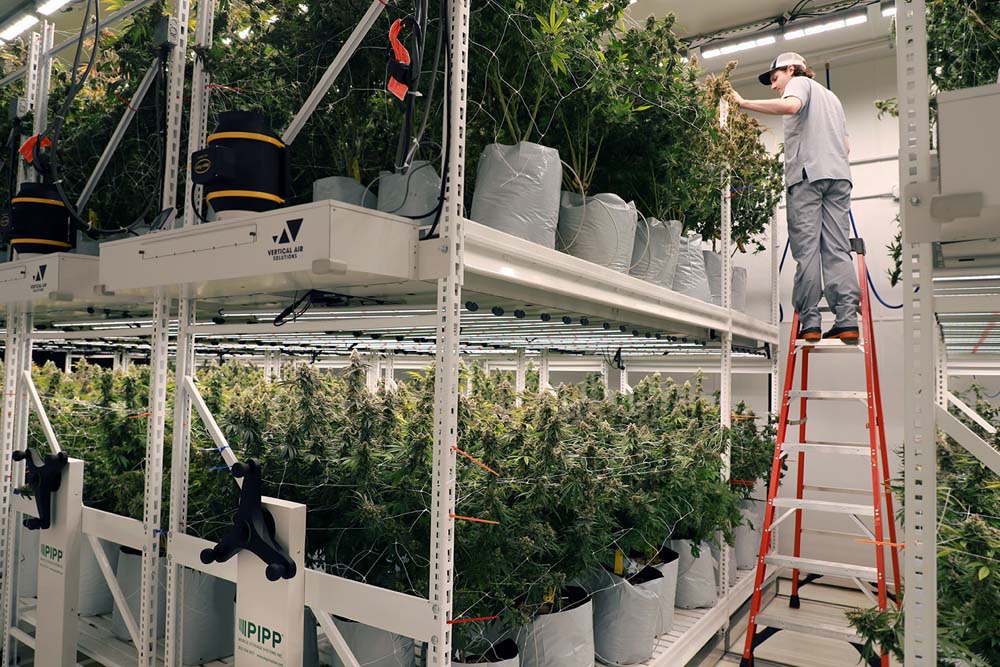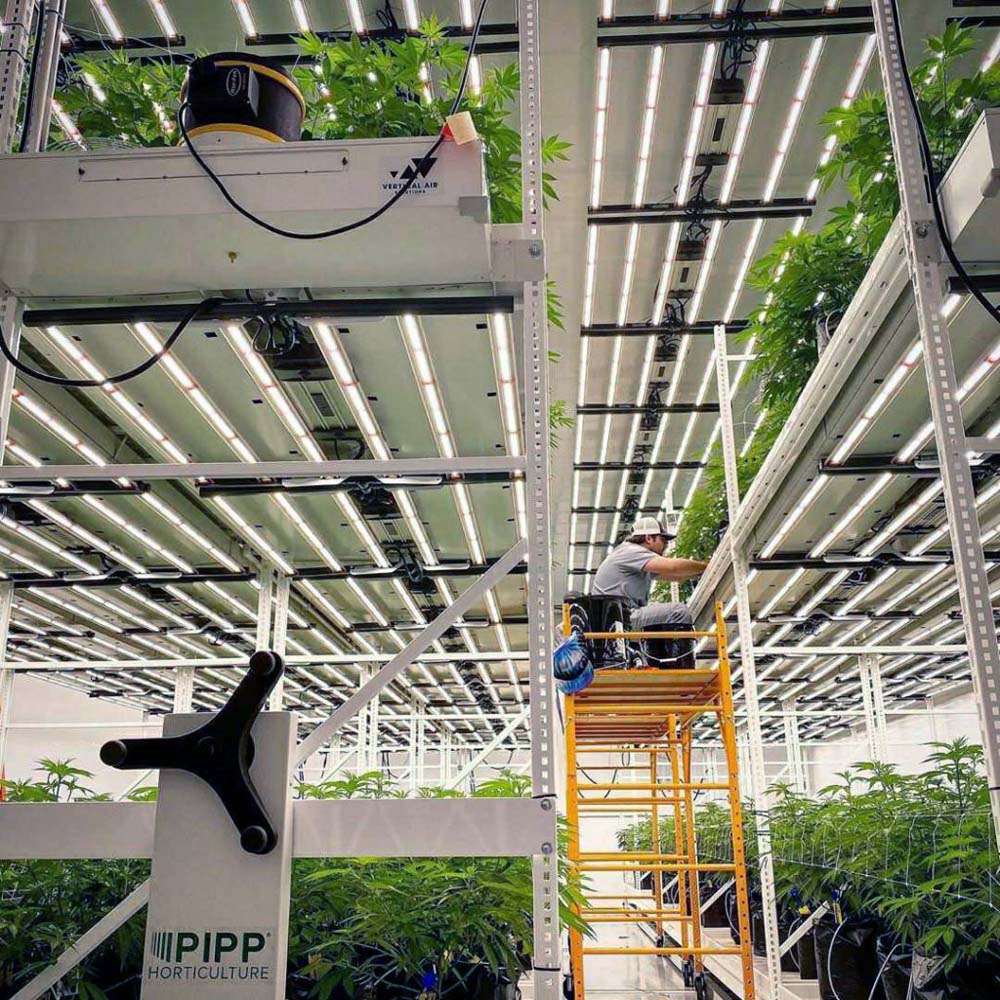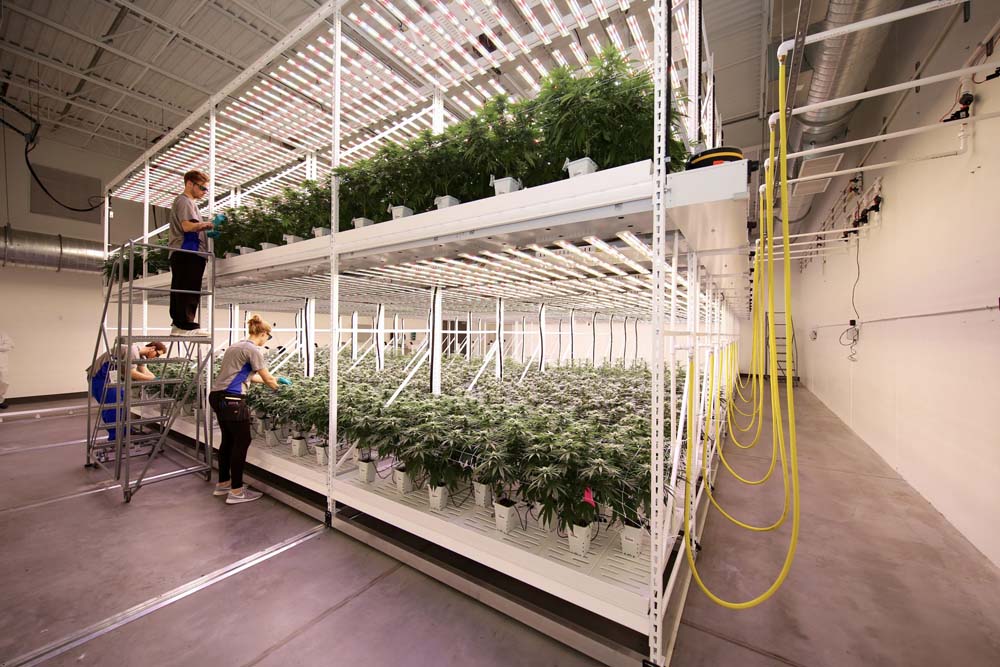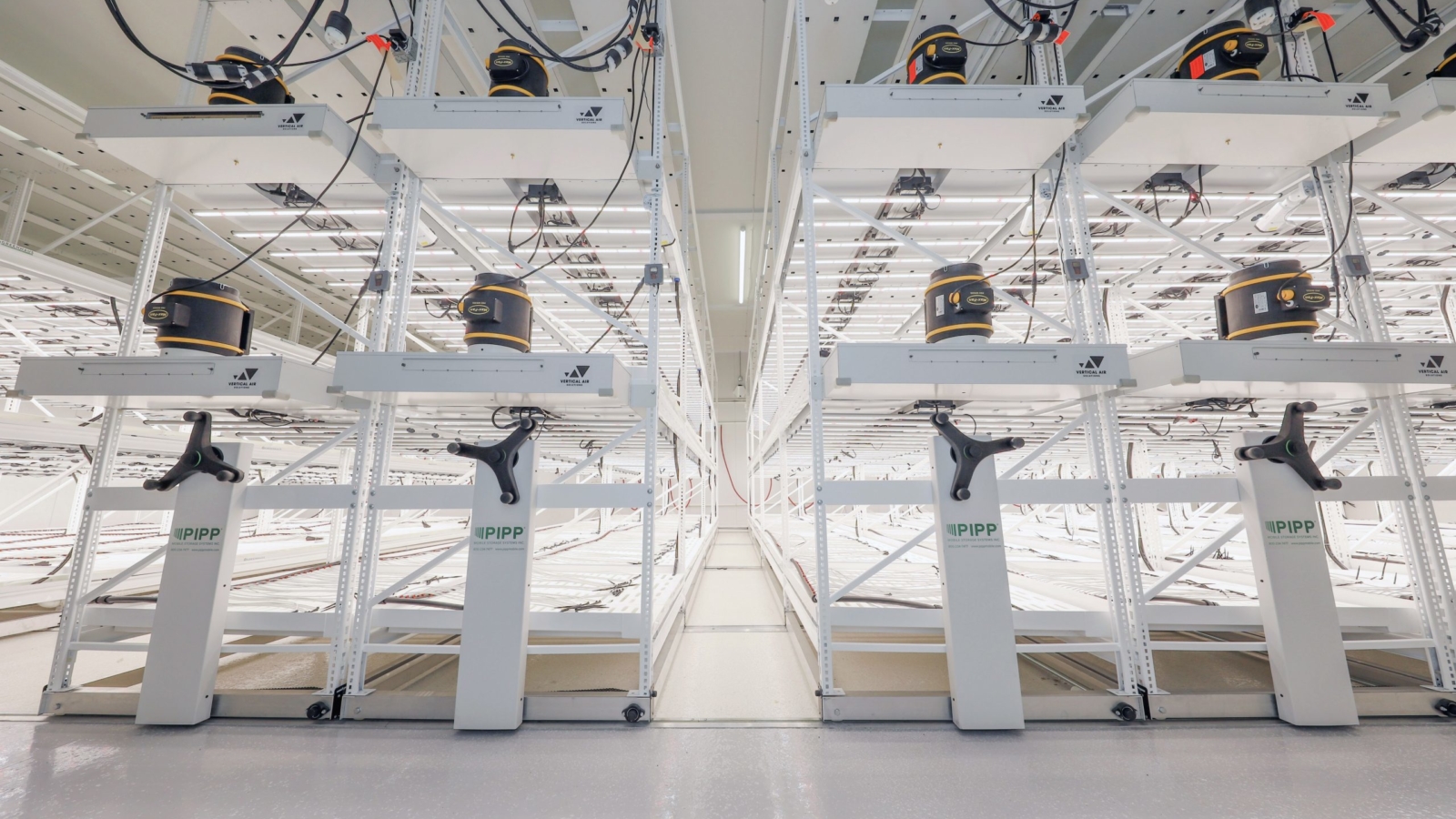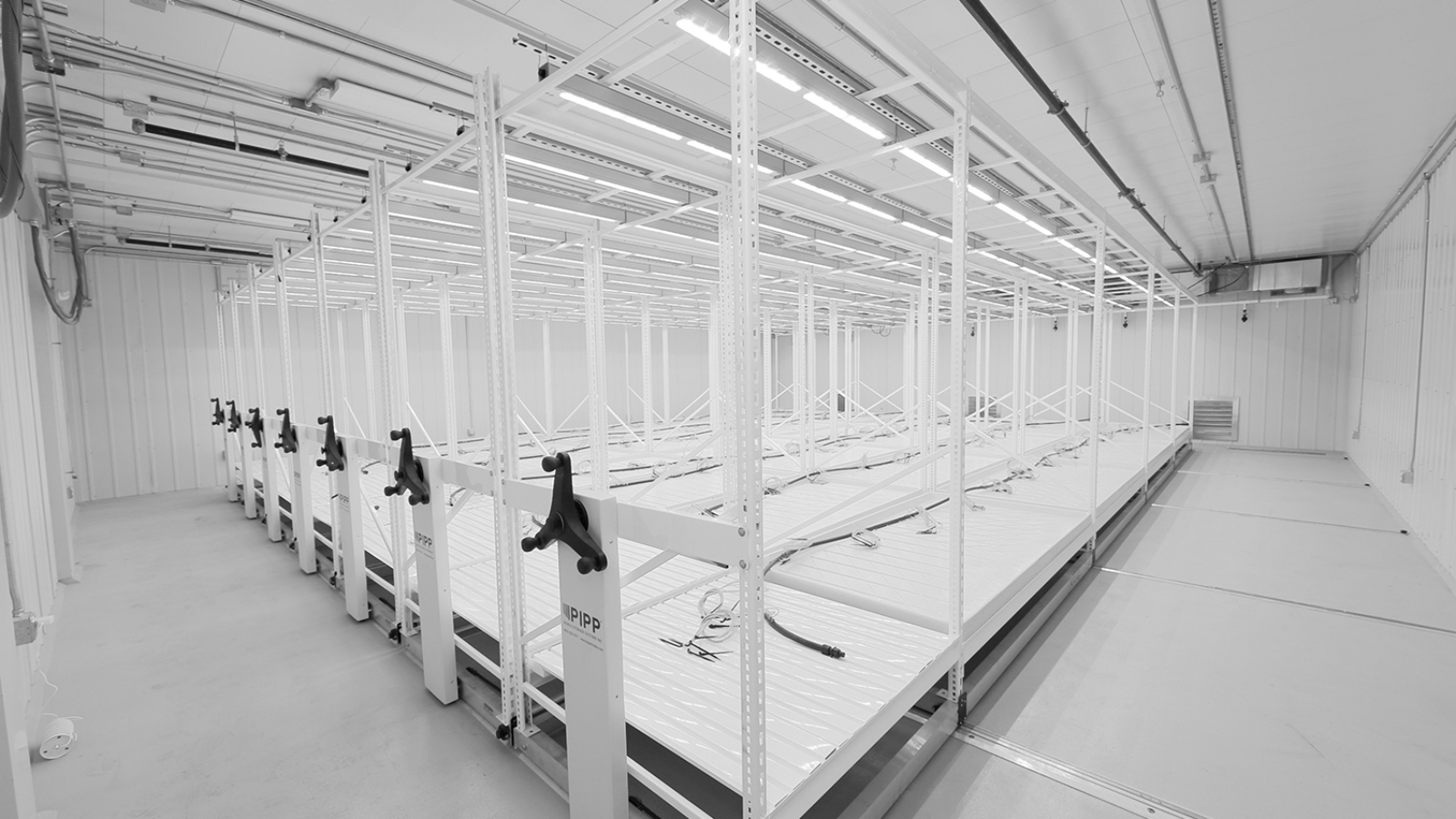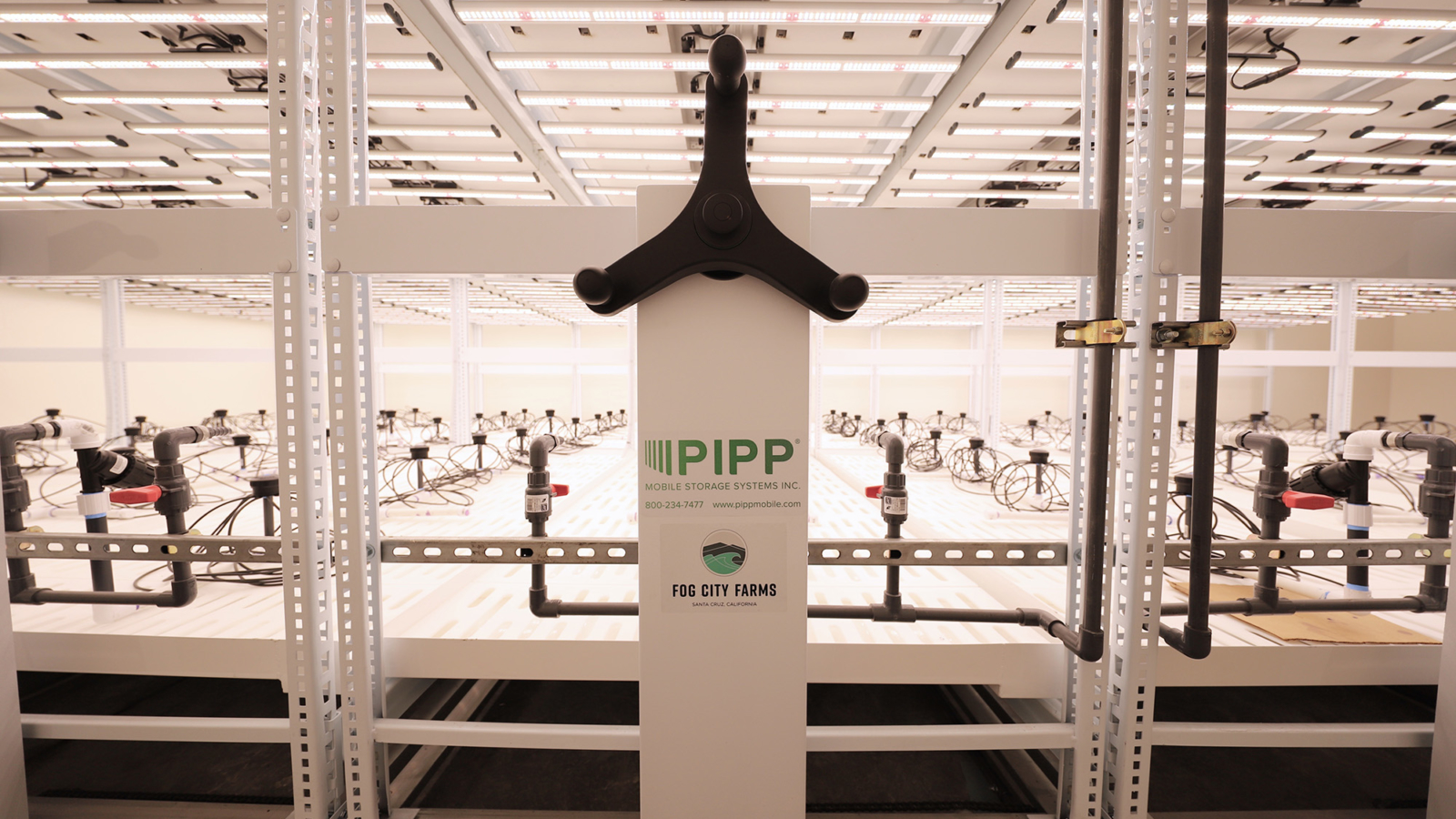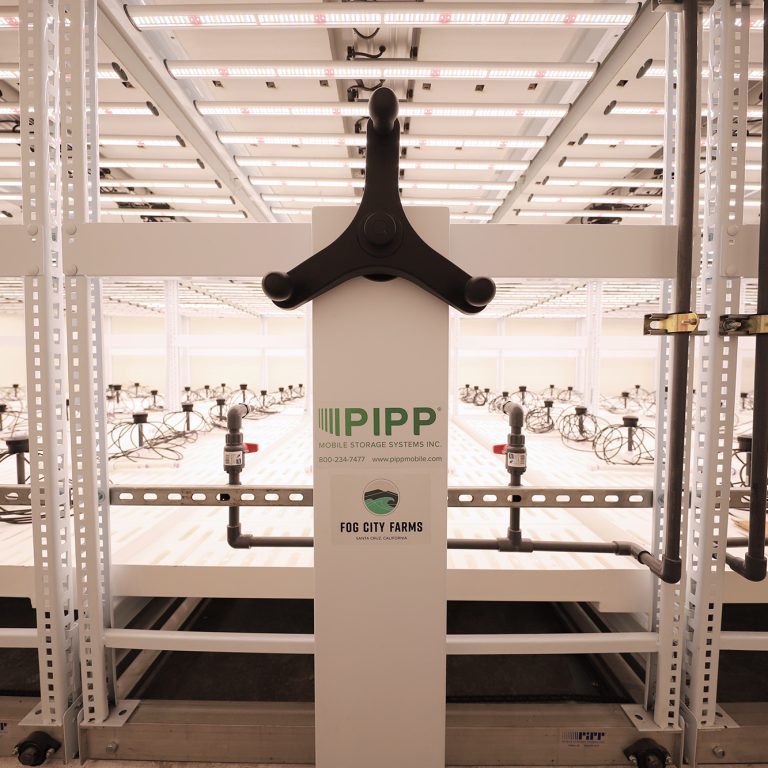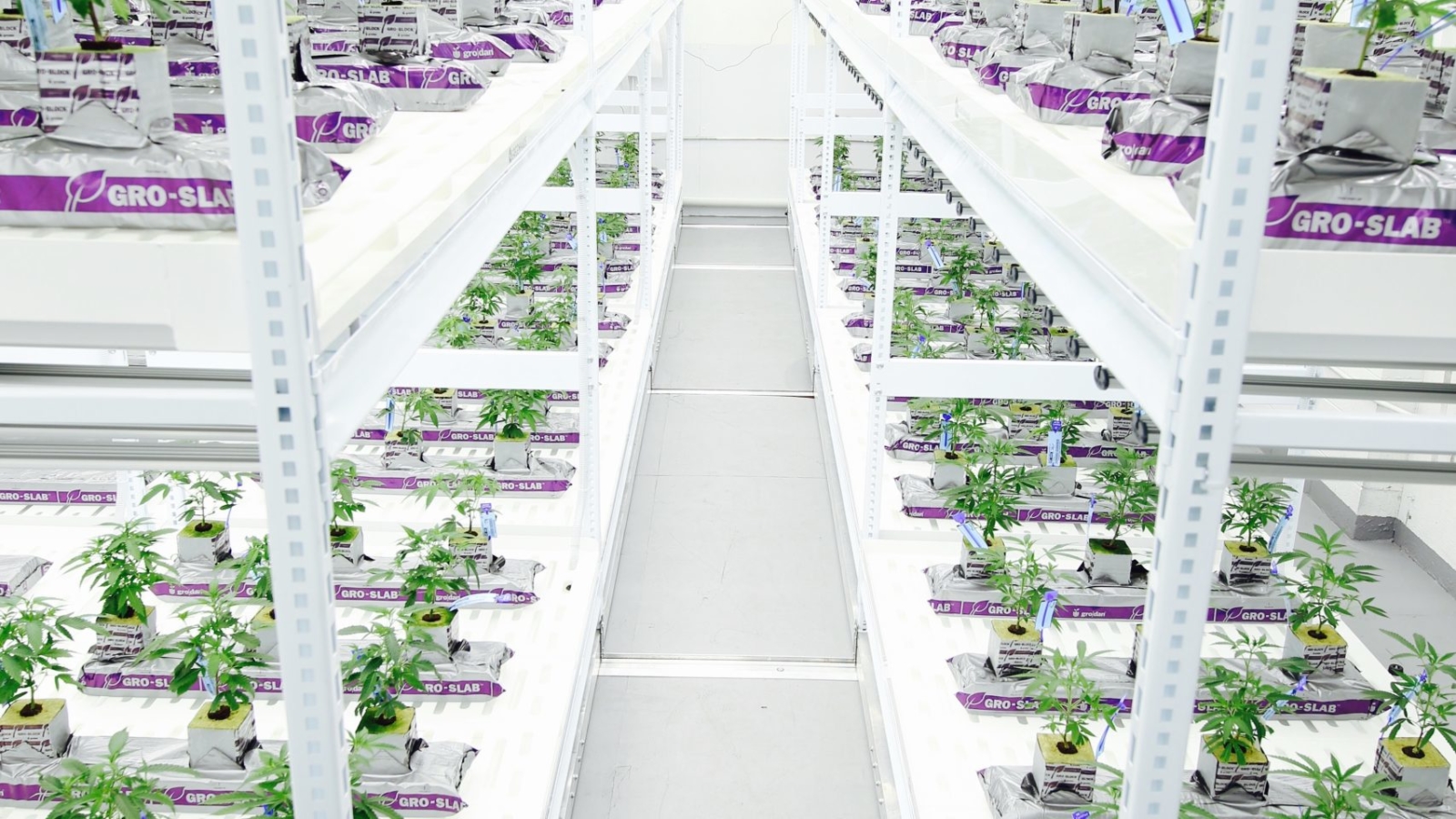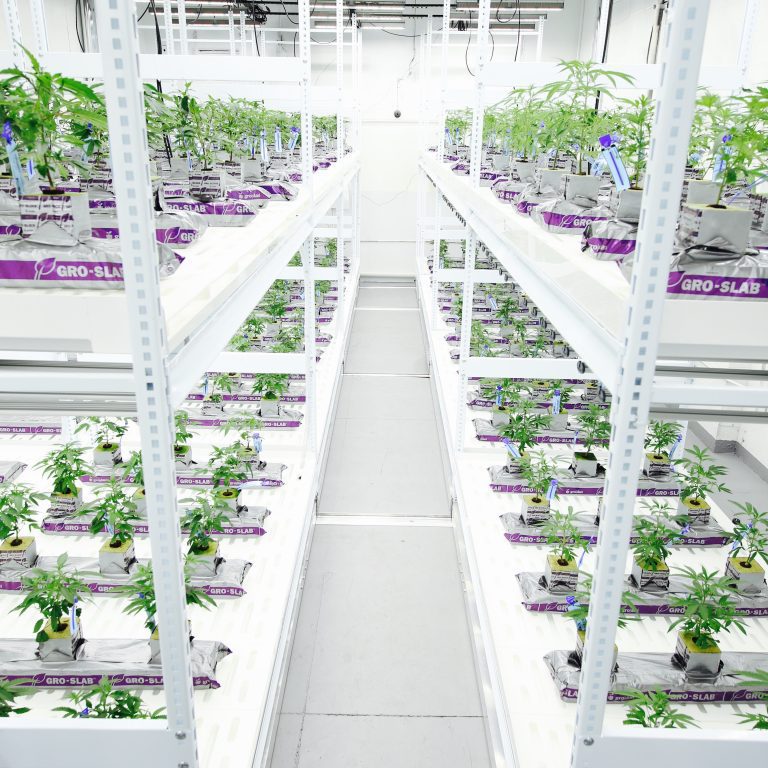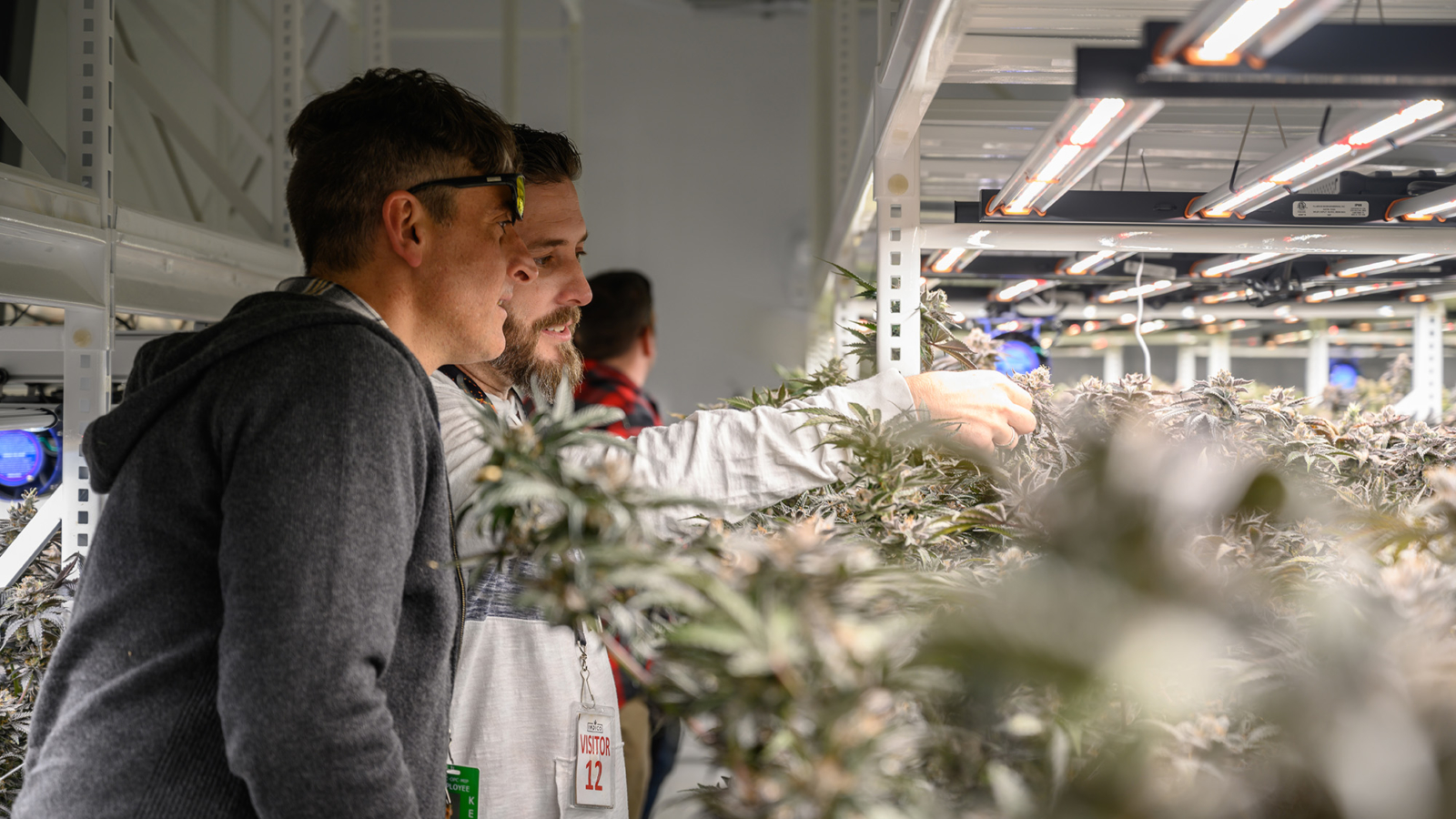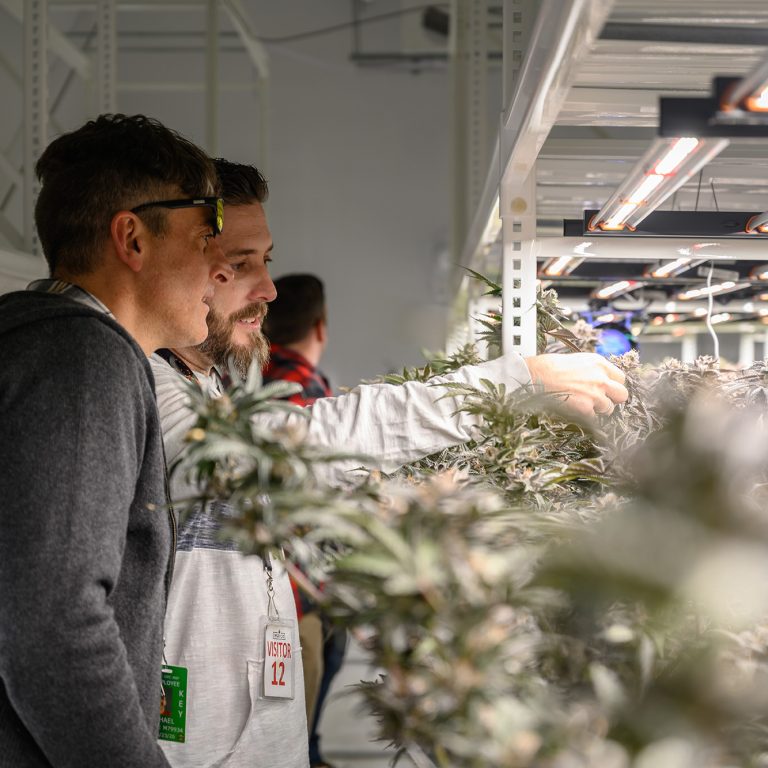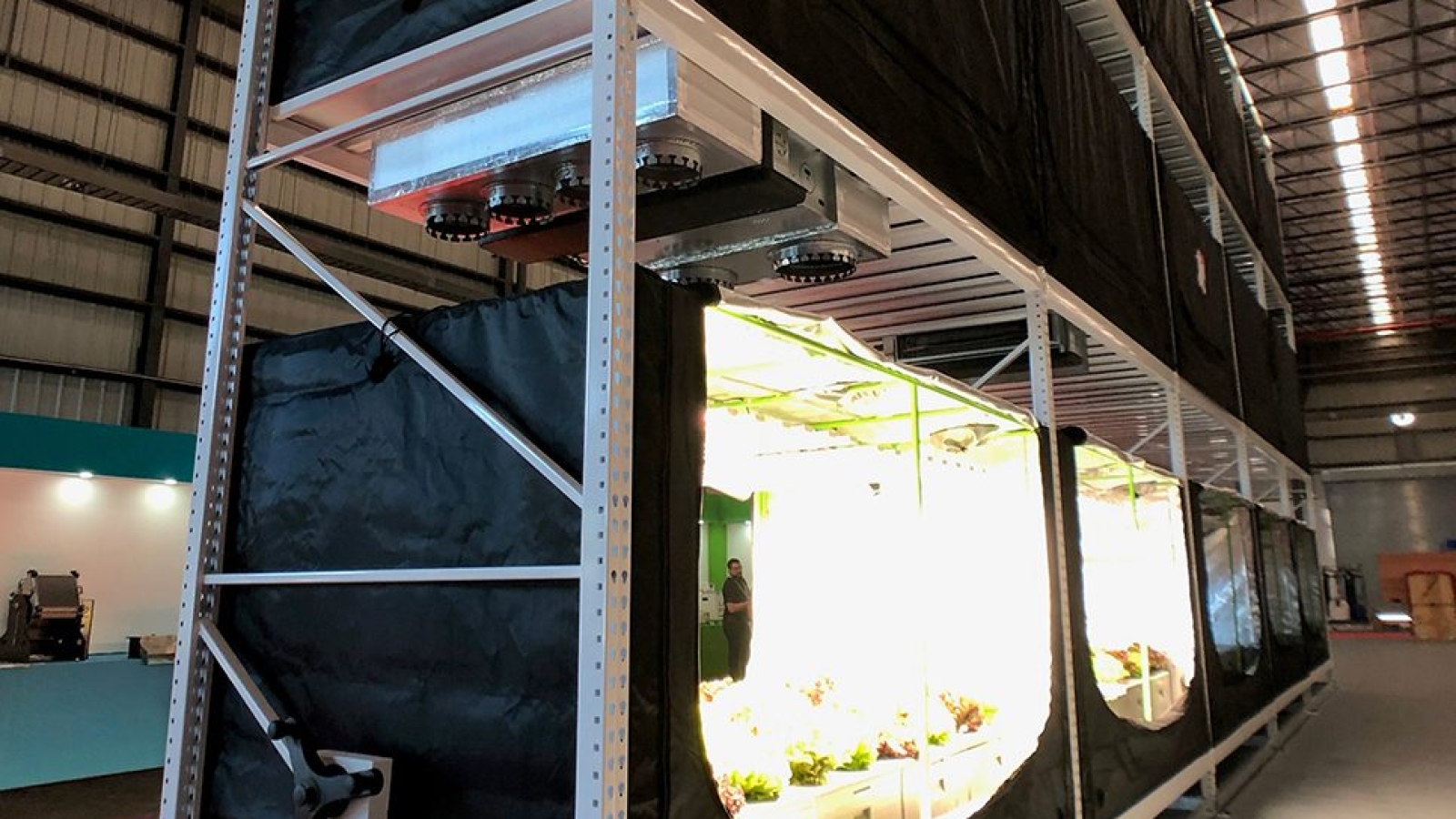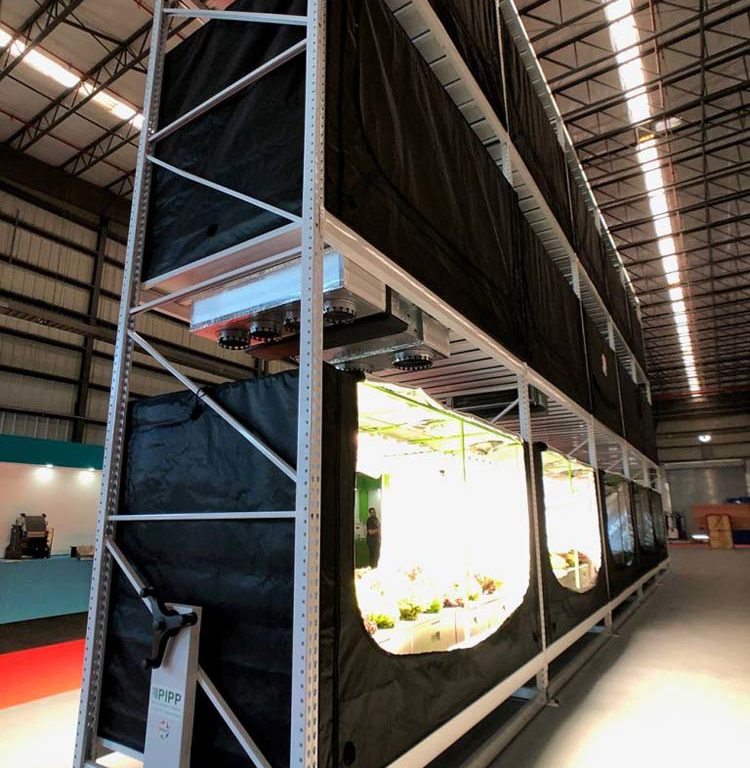Written by Karen Lloyd, Maximum Yield
Pipp Mobile Storage Systems thought it would breeze into the cannabis space, take direction from growers, and roll with flow. But that wasn’t exactly the case for North America’s largest provider of mobile shelving and storage solutions. In 2017, vertical farming hadn’t yet been dialed into perfection and Pipp realized, rather quickly, the legal cannabis industry was new territory for everyone.
“Our customers were looking to us to help guide the process, determine proper work-flow, spacing, elevation, plant density, and other key elements that are affected by or attached to our racking systems,” says Pipp’s sales management team.
Pipp entered the horticulture space with nearly 40 years of experience in the retail industry. As a business that has traditionally selected a single market to serve and lead, the team says Pipp hit the jackpot with the horticulture industry. The Walker, Michigan-based company didn’t wait long to get schooled in the world of growing. Pipp attended seminars, acquainted itself with appropriate suppliers, dropped into trade shows, hired experienced growers, and developed a green thumb of its own.
“The horticulture space demands focused attention to detail, deep analysis, continual improvement, innovation, corporate strength and staying power,” says the team. “These requirements speak directly to the attributes that embody Pipp Mobile Storage Systems, Inc., and now Pipp Horticulture.”
Pipp’s mobile vertical grow racks and Greenhaus grow tray systems allow cultivators to increase production by maximizing their cubic canopy footprint without increasing the square footprint of the growing room or building. Designed to meet the requirements of each and every specific customer and project, racks can be built up to 56 feet long and 23 feet high.
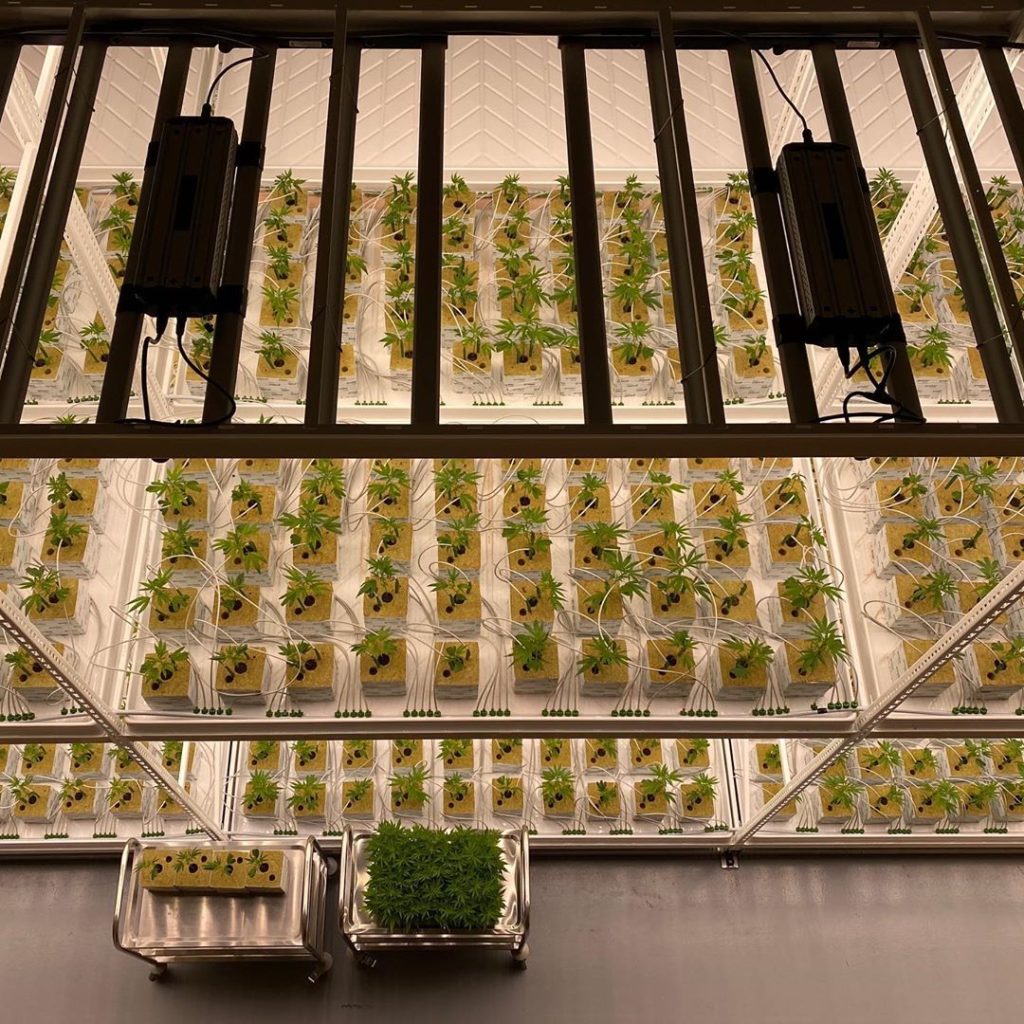
Pipp’s vertical grow racks also incorporate:
• Mobile carriages
• A drive system
• Vertical rack structures
• Integrated grow trays
• Airflow components
• Anchorage
• Anti-tip features
• Catwalk platforms
• Ladders
Pipp Horticulture is on a neverending mission of continual product improvement and advancement and has been awarded several U.S. patents for its technological innovations.
A Vision for Vertical Farming
Advancements in technologies will continue to push the horticultural industry forward and further expand its reach. The future is bright for growers and Pipp sees tremendous growth ahead rooted in what indoor cultivation will mean to families, cities, and the world. Vertical farming maximizes production, reduces operating costs, and increases overall revenue per square foot by as much as three times.
“People will be accessing and consuming fresher and healthier foods, while new employment opportunities will present in major cities previously unable to cultivate locally,” says Pipp’s sales team. “The possibilities are limitless, and we are humbled to have a place in it all.”
When it comes to vertical farming there have always been two primary dilemmas: rails on the floor and servicing upper levels. To address these high-demand concerns, Pipp designed a new TRAK-FREE Carriage System as well as a mobile elevated platform. “We see horticulture, indoor cultivation and processing, specifically, as the future for our organization and we are committed to hitting the ball out of the park for our customers, suppliers, employees and all who we serve.”
Pipp’s TRAK-FREE Carriage System leaves a smooth surface with no bumps or barriers to maneuver over between racking rows while the company’s ELEVATE Platform System enables cultivators to walk freely along upper grow levels without being hindered by rolling ladders or scaffolding. All Pipp rails are thoughtfully designed and meet ADA compliance standards.
The sales management team says the company won’t release a product or product feature without an extensive factory and client beta site testing. Although Pipp’s entry point into the horticultural industry was through the cannabis market, the company didn’t want to limit Pipp Horticulture to any specific cultivation or plant processing category. Instead, the company looks forward to building and developing solutions for all growers.
Green By Nature
The cubic space utilization of Pipp mobile systems is, by nature, a greenfriendly phenomena. Less space, electricity, lighting, water, gas and other critical resources are needed due to the efficient use of space. “Pipp is committed to being a green friendly supplier in the horticulture space,” says the sales team. The company’s recycled content for steel and aluminum products is an industryleading 66 percent while the majority of its packaging materials come from recycled materials.
Additionally, Pipp Horticulture offers LEED certification assistance to each and every customer. With hundreds of projects on the go and completed installations under its belt, Pipp’s knowledge base only continues to grow. The company’s in-house team now includes professional engineers, CAD designers, sales support, and experienced operators to provide partners with outstanding support before and after installation. “This is not a micromanaging culture, but rather a highly committed team that respects one another and understands that our individual performances affect and benefit the group, including our customers, as a whole,” says the sales team. “We are dealing with and affecting a living product that moves to its own schedule, not ours. Because of this, our performance is essential, and we take that responsibility very seriously.”
